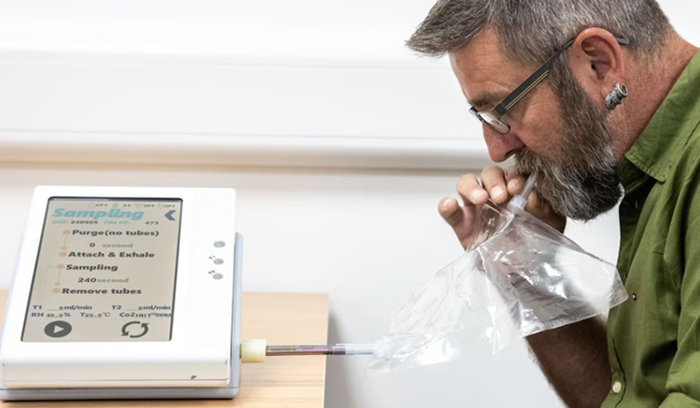The medical community is celebrating a potentially life-saving breakthrough in the early detection of pancreatic cancer. Scientists have developed a simple, non-invasive breath test that shows high accuracy in identifying early-stage tumors. This diagnostic innovation offers profound new hope in the fight against one of the deadliest forms of cancer. It promises to transform patient outcomes by allowing for much earlier clinical intervention.
Pancreatic cancer is notoriously difficult to detect early, leading to its high mortality rate. This new technology provides a simple and accessible screening tool. It represents a significant triumph of medical ingenuity.
Development and Large-Scale NHS Testing
This cutting-edge diagnostic tool was developed through a successful collaboration led by researchers at Imperial College London. This initial work included analyzing over 700 breath samples from patients during a two-year clinical study. The technology is now progressing to a massive, national validation trial across the United Kingdom.
The trial is being run by the National Health Service (NHS) at approximately 40 hospital sites across England, Wales, and Scotland. This large-scale study aims to recruit over 6,000 patients with an unknown diagnosis but suspected cancer. This robust testing ensures the method is accurate across diverse patient populations, a key step before regulatory approval.
The Ingenuity of the Breath Analysis
The innovative breath test works by identifying unique volatile organic compounds (VOCs) in a person’s breath. These compounds are specific metabolic byproducts released by the cancer cells themselves. The test uses a highly sensitive detection system, often referred to as a “breathalyzer.” Isolating specific combinations of these VOCs can pinpoint whether a person has pancreatic cancer.
The simplicity of the test makes it a powerful tool for large-scale population screening. This non-invasive method is significantly cheaper and faster than current diagnostic methods like CT scans or biopsies. Scientists believe results could be provided to general practitioners ($\text{GPs}$) within just three days. This speed is critical for reducing patient anxiety and accelerating the next steps in their care.
Accelerating Treatment and Survival Rates
The urgency of this breakthrough is clear when examining existing statistics. Pancreatic cancer has the highest mortality rate of all major cancers. The five-year survival rate for patients is currently only around 13% in the United States. This devastating outcome is largely due to the fact that over 80% of cases are diagnosed only after the cancer has spread beyond the pancreas.
Implementing this accurate, early-stage diagnostic tool is expected to accelerate treatment timelines dramatically. A quicker diagnosis means patients can move immediately toward potentially curative surgery. This rapid intervention is critical to preventing disease progression. If widely implemented, the breath test could significantly increase the percentage of patients eligible for surgery, raising the overall survival rate globally. The American Cancer Society provides current statistics on survival rates and the critical need for early diagnosis.
A Global Model for Accessible Screening
The development of this simple breath test provides a powerful model for accessible screening worldwide. Because the technology is portable and requires no complex infrastructure, it can be easily deployed in community clinics. This accessibility is essential for tackling health disparities in low-income and underserved populations.
The NHS trial serves as a blueprint for implementing high-volume, cost-effective screening programs. The National Cancer Institute (NCI) actively supports research into early cancer detection methods. The effort is supported by groups like the Pancreatic Cancer Action Network (PanCAN) who champion diagnostic breakthroughs. The National Institutes of Health (NIH) funds much of the foundational research that makes these diagnostic tools possible.
Resources
- National Institutes of Health (NIH) on Biomarkers and Diagnostics
- National Cancer Institute (NCI) on Early Cancer Detection Research
- American Cancer Society on Pancreatic Cancer Survival Rates
- Pancreatic Cancer Action Network (PanCAN) on Diagnostic Breakthroughs

